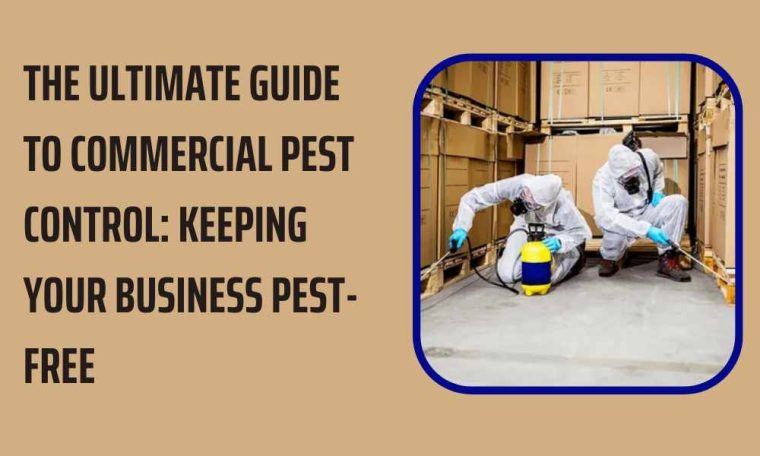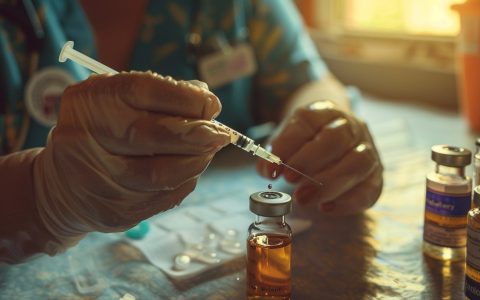
Pests in a commercial setting can be a nightmare, causing damage to property, spreading diseases, and tarnishing your business’s reputation. Whether you run a restaurant, a retail store, or an office space, keeping pests at bay is essential for maintaining a safe and hygienic environment for your employees and customers. In this comprehensive guide, we’ll explore everything you need to know about commercial pest control, from prevention strategies to treatment options.
Understanding the Importance of Commercial Pest Control
Pests such as rodents, insects, and birds can wreak havoc on commercial properties. Not only can they damage structures and inventory, but they can also pose serious health risks to occupants. In a business environment, a pest infestation can lead to financial losses, legal liabilities, and damage to your brand’s reputation. Therefore, implementing effective pest control measures is crucial for safeguarding your business.
Prevention Strategies
Prevention is the first line of defense against pests in a commercial setting. By implementing proactive measures, you can reduce the likelihood of infestations and minimize the need for costly treatments. Here are some key prevention strategies to consider:
1. Maintain Cleanliness
Keeping your premises clean and well-maintained is essential for deterring pests. Regularly sweep and mop floors, empty trash bins promptly, and sanitize food preparation areas. Eliminating food and water sources will make your property less attractive to pests.
2. Seal Entry Points
Inspect your building for any gaps, cracks, or openings that pests could use to gain entry. Seal these entry points with caulk or weatherstripping to prevent pests from infiltrating your property.
3. Proper Waste Management
Dispose of waste properly and ensure that garbage bins are tightly sealed. Consider using outdoor trash compactors to minimize odors and prevent pests from scavenging for food.
4. Landscape Maintenance
Trim bushes and trees away from your building to prevent pests from using them as bridges to access your property. Additionally, remove standing water and debris from gutters and drains to eliminate potential breeding grounds for mosquitoes and other pests.
Identification of Common Pests
Understanding the types of pests that are commonly found in commercial settings is essential for effective pest management. Here are some of the most common pests to watch out for:
1. Rodents
Rats and mice are notorious for causing damage to buildings and spreading diseases. They can chew through wires, contaminate food, and leave behind droppings that pose health risks to humans.
2. Insects
Cockroaches, ants, flies, and bed bugs are among the most common insects found in commercial properties. They can multiply rapidly and are often difficult to eradicate without professional assistance.
3. Birds
Pigeons and sparrows are common nuisance birds that can roost on buildings and create sanitation problems. Their droppings can corrode building materials and transmit diseases to humans.
Treatment Options
While prevention is key, sometimes pests still manage to infiltrate your property. In such cases, it’s important to have effective treatment options in place to eliminate the infestation. Here are some common treatment options for commercial pest control:
1. Chemical Treatments
Chemical pesticides are often used to control insect and rodent infestations in commercial settings. However, it’s essential to use these products responsibly and in accordance with safety regulations to minimize risks to human health and the environment.
2. Integrated Pest Management (IPM)
IPM is a holistic approach to pest control that focuses on prevention, monitoring, and control. It involves using a combination of methods, such as habitat modification, biological control, and targeted pesticide applications, to manage pest populations effectively.
3. Pest Exclusion
Pest exclusion involves sealing off entry points and implementing barriers to prevent pests from entering your property. This may include installing door sweeps, window screens, and bird netting to keep pests out.
4. Trapping and Removal
Trapping is often used to capture and remove rodents and other pests from commercial properties. Humane traps can be used to catch animals alive, while lethal traps may be necessary for more severe infestations.
Also read :- The Ultimate Guide to Villa Shifting Services in Dubai: Everything You Need to Know
Hiring a Professional Pest Control Service
While some minor pest problems can be managed in-house, larger infestations often require the expertise of professional pest control services. When hiring a pest control company, consider the following factors:
1. Experience and Expertise
Choose a pest control company with a proven track record of successfully managing pest infestations in commercial properties. Look for technicians who are trained and certified in pest control methods.
2. Safety Measures
Ensure that the pest control company follows proper safety protocols and uses environmentally friendly products whenever possible. They should also provide clear guidelines for occupants on how to safely re-enter treated areas.
3. Customized Solutions
Seek a pest control provider that offers customized solutions tailored to the unique needs of your business. A one-size-fits-all approach may not be effective in addressing the specific pest challenges you face.
Conclusion
Maintaining a pest-free environment is essential for the success of any commercial enterprise. By implementing proactive prevention strategies, identifying common pests, and employing effective treatment options, you can keep your business free from the damaging effects of pest infestations. Whether you choose to handle pest control in-house or enlist the help of professionals, investing in pest management is an investment in the health and longevity of your business.
Note :- If you need more ideas about Commercial Pest Control, you can find them on www.subsellkaro.com



